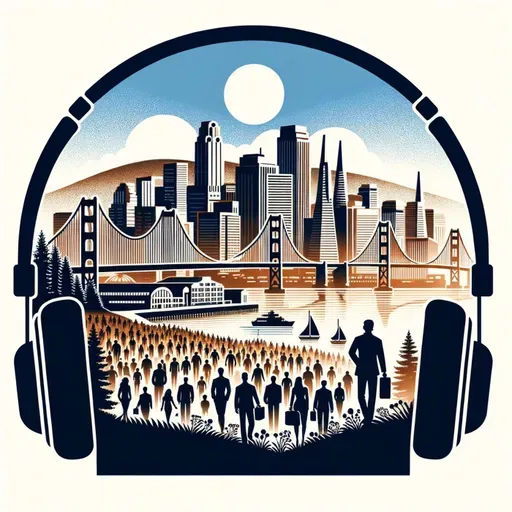
07 November 2025
Jobless Boom in the Bay: Tech Disruption, Hiring Freeze and the Struggle for Skilled Workers
San Francisco Bay Area Job Market Report
About
The San Francisco Bay Area job market in late 2025 is marked by a contradictory environment: while the official unemployment rate remains relatively low near 4.4% according to recent estimates from the Federal Reserve Bank of Chicago, listeners face the slowest pace of hiring in over a decade and historically high layoff numbers, with Challenger, Gray & Christmas reporting 1,099,500 job cuts across the United States so far this year and 158,734 in California alone. This sharp downturn in hiring, dubbed a “jobless boom” by KPMG chief economist Diane Swonk, leaves those out of work facing longer and more difficult job searches, as many companies opt to freeze new positions and retrench rather than expand.
The employment landscape has shifted dramatically due to aggressive cost-cutting, a surge in artificial intelligence adoption, and restructuring following pandemic-era expansions. AI alone has been responsible for more than 48,000 job cuts nationally in 2025, a number that continues to grow monthly, and automation impacts warehousing, tech, retail, and financial services especially hard. Retail, services, and warehousing are among the sectors reporting the highest layoffs, while technology, finance, and healthcare remain central to the Bay Area economy, with other major employers like Salesforce, Google, Meta, Kaiser Permanente, and UCSF still shaping the market. However, reports from SFGate and new data from ADP highlight that some sectors, notably AI infrastructure, continue hiring selectively, even as broader corporate hiring announcements are at their lowest since 2011.
Despite ongoing layoffs, the Bay Area still demonstrates pockets of growth in AI and data infrastructure, clean energy, and healthcare technology, with investments in cloud computing and sustainability projects reflecting evolving industry priorities. Government initiatives in California under Governor Gavin Newsom include workforce retraining, job placement programs, and incentives for green and digital economy jobs, though data on recent outcomes is fragmented due to federal government shutdowns and inconsistent reporting.
Seasonal job patterns are absent this year, as retailers and logistics companies announced the lowest number of planned seasonal hires since records began. This affects traditional holiday job-seekers and further tightens an already shriveled opportunity pool. Commuting trends show reduced transit ridership and persistent hybrid work arrangements, as many employers continue to favor remote or hybrid models.
Key findings include the Bay Area’s vulnerability to tech-driven disruption from AI and automation, a paradoxically low unemployment rate paired with rising long-term unemployment and stagnant hiring, and a market where even skilled workers struggle to regain footing. The landscape is especially difficult for new graduates and older workers seeking reentry, exacerbated by impersonal, software-driven recruitment systems.
Listeners seeking work might consider recent openings such as a machine learning engineer at a major cloud services firm, a renewable energy project manager at a local utility, and a clinical research coordinator at UCSF Medical Center.
Thank you for tuning in and remember to subscribe. This has been a quiet please production, for more check out quiet please dot ai.
For more http://www.quietplease.ai
Get the best deals https://amzn.to/3ODvOta
This content was created in partnership and with the help of Artificial Intelligence AI
The employment landscape has shifted dramatically due to aggressive cost-cutting, a surge in artificial intelligence adoption, and restructuring following pandemic-era expansions. AI alone has been responsible for more than 48,000 job cuts nationally in 2025, a number that continues to grow monthly, and automation impacts warehousing, tech, retail, and financial services especially hard. Retail, services, and warehousing are among the sectors reporting the highest layoffs, while technology, finance, and healthcare remain central to the Bay Area economy, with other major employers like Salesforce, Google, Meta, Kaiser Permanente, and UCSF still shaping the market. However, reports from SFGate and new data from ADP highlight that some sectors, notably AI infrastructure, continue hiring selectively, even as broader corporate hiring announcements are at their lowest since 2011.
Despite ongoing layoffs, the Bay Area still demonstrates pockets of growth in AI and data infrastructure, clean energy, and healthcare technology, with investments in cloud computing and sustainability projects reflecting evolving industry priorities. Government initiatives in California under Governor Gavin Newsom include workforce retraining, job placement programs, and incentives for green and digital economy jobs, though data on recent outcomes is fragmented due to federal government shutdowns and inconsistent reporting.
Seasonal job patterns are absent this year, as retailers and logistics companies announced the lowest number of planned seasonal hires since records began. This affects traditional holiday job-seekers and further tightens an already shriveled opportunity pool. Commuting trends show reduced transit ridership and persistent hybrid work arrangements, as many employers continue to favor remote or hybrid models.
Key findings include the Bay Area’s vulnerability to tech-driven disruption from AI and automation, a paradoxically low unemployment rate paired with rising long-term unemployment and stagnant hiring, and a market where even skilled workers struggle to regain footing. The landscape is especially difficult for new graduates and older workers seeking reentry, exacerbated by impersonal, software-driven recruitment systems.
Listeners seeking work might consider recent openings such as a machine learning engineer at a major cloud services firm, a renewable energy project manager at a local utility, and a clinical research coordinator at UCSF Medical Center.
Thank you for tuning in and remember to subscribe. This has been a quiet please production, for more check out quiet please dot ai.
For more http://www.quietplease.ai
Get the best deals https://amzn.to/3ODvOta
This content was created in partnership and with the help of Artificial Intelligence AI